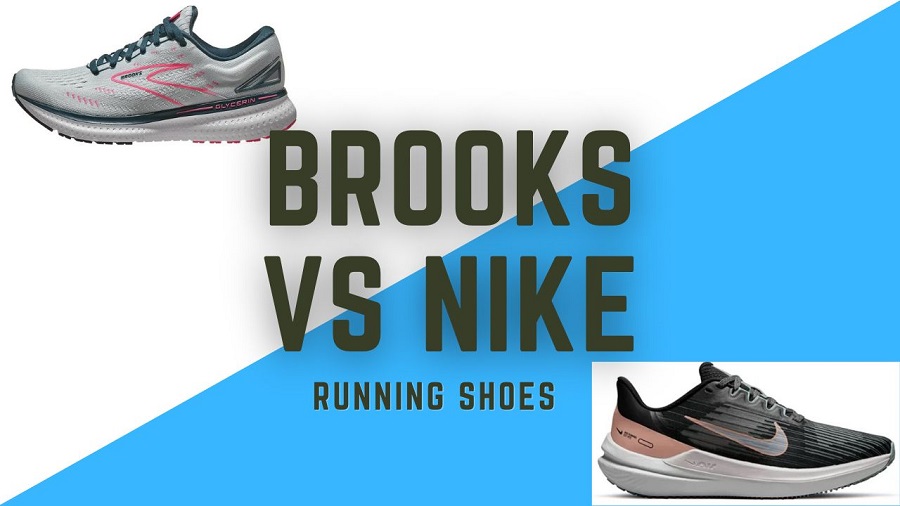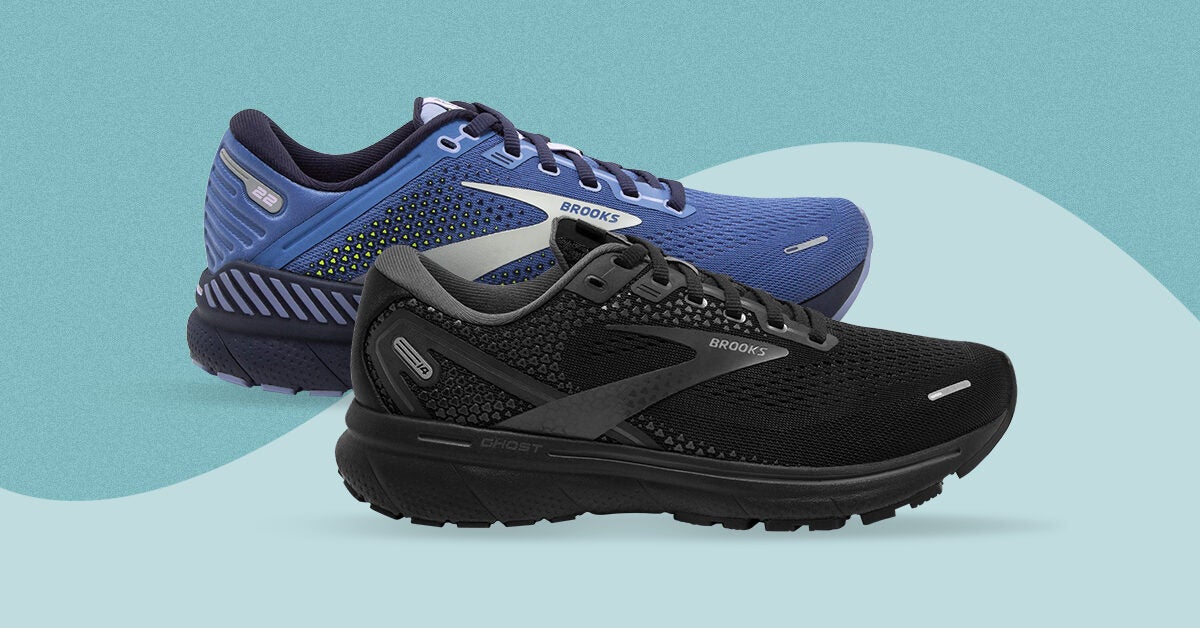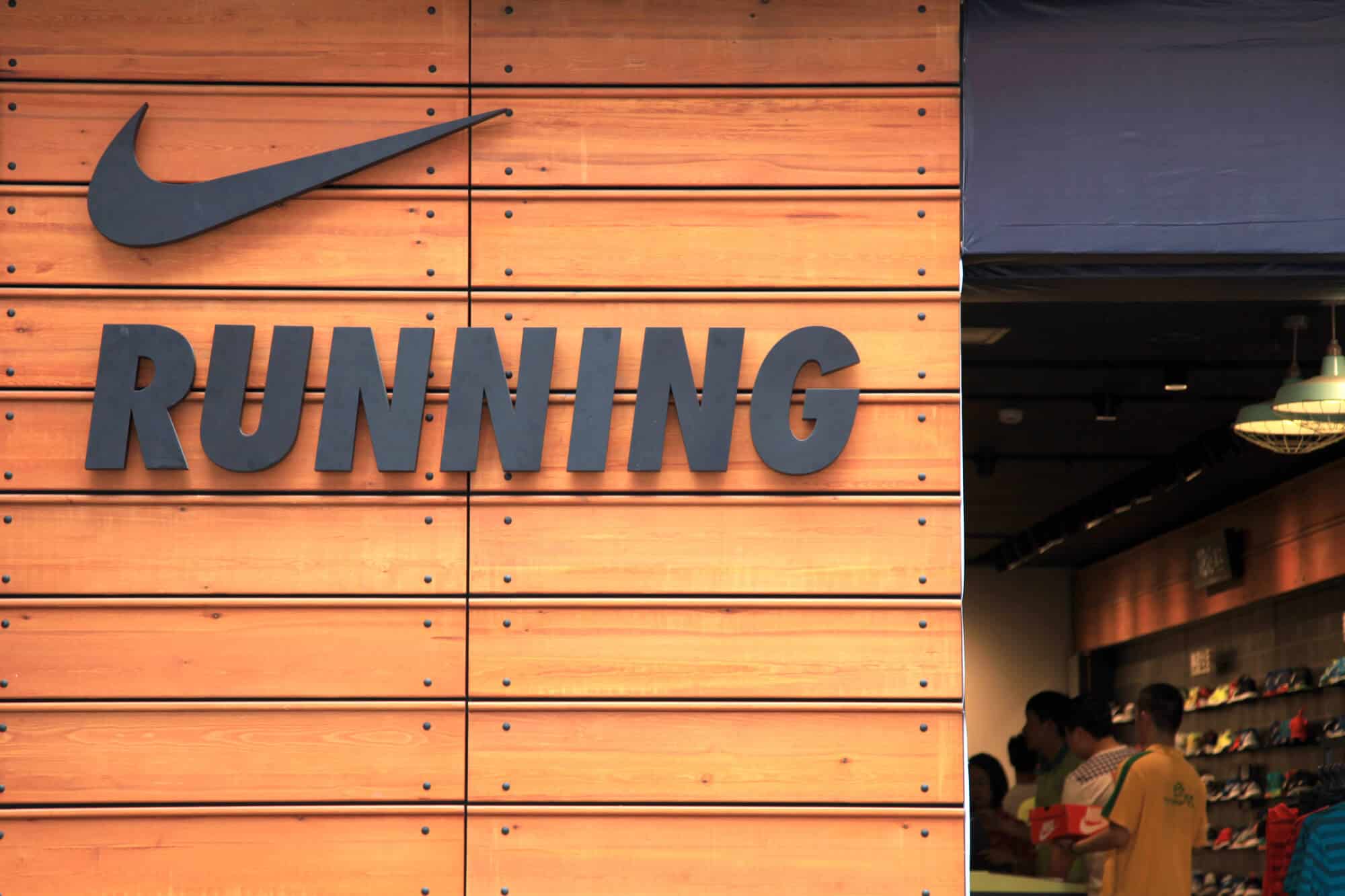Understanding the Brands: Nike and Brooks Overview
Nike and Brooks are two prominent running shoe brands, each with its own unique history, mission, and target market. Nike, a global powerhouse in athletic apparel and footwear, is renowned for its innovative designs, cutting-edge technology, and star-studded endorsements. The company caters to a wide range of athletes, from casual joggers to professional runners and elite performers in various sports. On the other hand, Brooks specializes exclusively in running shoes, apparel, and accessories. The brand’s mission is to create footwear that empowers runners to achieve their goals, regardless of their skill level or experience. Brooks focuses on delivering high-quality, comfortable, and durable shoes that provide superior support and cushioning, making it a popular choice among serious runners and running enthusiasts.
While both brands offer a variety of running shoe models, Nike is often associated with speed, performance, and style, while Brooks is recognized for its exceptional support, cushioning, and stability. By understanding the unique selling points of each brand and the types of runners they cater to, consumers can make informed decisions when choosing between Nike and Brooks running shoes.
Key Factors to Consider When Choosing Running Shoes
When comparing Nike and Brooks running shoes, it’s essential to consider several factors to ensure a proper fit and optimal performance. These factors include fit, cushioning, support, stability, durability, and breathability. Fit is crucial for comfort and injury prevention. Runners should look for shoes that accommodate their foot shape and size, with enough room in the toe box and a secure heel fit. Cushioning is another critical aspect, as it affects shock absorption and energy return. Runners should choose shoes with adequate cushioning based on their running style, weight, and preferences.
Support and stability are particularly important for runners with pronation issues or flat feet. Shoes with motion control, stability features, or extra support can help maintain proper foot alignment and prevent injuries. Durability is also a factor to consider, as high-quality running shoes should withstand regular use and provide long-lasting performance.
Lastly, breathability is vital for comfort during long runs or hot weather conditions. Shoes with breathable upper materials allow for better air circulation, keeping the feet cool and dry. By carefully evaluating these factors, runners can select the right Nike or Brooks running shoes based on their individual running styles, preferences, and goals.
Nike’s Top Running Shoe Models
Nike offers a diverse range of running shoe models, each with unique features and benefits. Here are three of Nike’s most popular models:
Air Zoom Pegasus
The Nike Air Zoom Pegasus is a versatile and reliable running shoe, suitable for both novice and experienced runners. Its key features include a comfortable fit, responsive cushioning, and a durable outsole. The Pegasus provides a smooth ride and adequate support for various running distances and terrains. However, some users may find it less breathable compared to other Nike models.
Vaporfly
The Nike Vaporfly series, including the Next% and 4% models, is designed for competitive runners seeking speed and efficiency. These shoes feature a unique carbon fiber plate and ZoomX foam, which provide exceptional energy return and cushioning. While the Vaporfly series offers unparalleled performance, its high price point and limited durability may be drawbacks for some runners.
Joyride
The Nike Joyride is a unique running shoe that utilizes small foam beads in the midsole to deliver customized cushioning and shock absorption. The Joyride is an excellent option for runners looking for a comfortable and stylish shoe, but its performance may not match that of more specialized Nike models like the Pegasus or Vaporfly.
Brooks’ Top Running Shoe Models
Brooks offers a variety of running shoe models designed to cater to different runner preferences and needs. Here are three of Brooks’ most popular models:
Ghost
The Brooks Ghost is a well-cushioned and versatile running shoe, suitable for daily training and long-distance runs. Its key features include a soft and breathable upper, ample cushioning, and a smooth transition. While the Ghost provides excellent comfort and durability, some runners may find it less responsive compared to other Brooks models.
Adrenaline GTS
The Brooks Adrenaline GTS is a stability running shoe designed for overpronators or runners with flat feet. It offers motion control, guidance, and cushioning to ensure a stable and supportive ride. The Adrenaline GTS is an excellent option for runners seeking a balance between support and comfort, but its heavier weight may be a drawback for some.
Levitate
The Brooks Levitate is a high-energy return shoe, featuring a DNA AMP midsole that provides exceptional bounce and cushioning. The Levitate is ideal for runners looking for a responsive and fast shoe, but its firmness and higher price point may not appeal to everyone.
How to Choose Between Nike and Brooks Running Shoes
When deciding between Nike and Brooks running shoes, consider the following factors:
Running Distance and Terrain
For long-distance runs or marathons, shoes with ample cushioning and durability, such as the Brooks Ghost or Nike Air Zoom Pegasus, are suitable options. For trail running, consider shoes with superior traction and protection, like the Brooks Cascadia or Nike Wildhorse.
Foot Type
Identify your foot type (neutral, overpronation, or supination) and choose shoes accordingly. For overpronators, stability shoes like the Brooks Adrenaline GTS or Nike Air Zoom Structure are recommended. For neutral runners, consider the Brooks Ghost or Nike Air Zoom Pegasus, while supinators may prefer the Brooks Levitate or Nike Zoom Fly.
Personal Preferences
Consider your preferences for comfort, style, and performance. Runners seeking a responsive ride might prefer the Brooks Levitate or Nike Vaporfly, while those prioritizing comfort may opt for the Brooks Ghost or Nike Joyride.
Trying on Shoes
Always try on running shoes before purchasing to ensure a proper fit. Visit a specialty running store or use online platforms that offer try-on services. Pay attention to the shoe’s fit, cushioning, support, stability, and breathability.
Seeking Professional Advice
Consult with running experts, coaches, or physical therapists who can provide personalized recommendations based on your running style, foot type, and injury history.
Testing the Shoes on Runs
Before committing to a purchase, test the shoes on short runs to evaluate their performance, comfort, and overall satisfaction. This will help you determine if the shoes meet your needs and preferences.
Comparing Nike and Brooks Running Shoes: A Side-by-Side Analysis
This side-by-side comparison of Nike and Brooks running shoes highlights their key differences in terms of fit, cushioning, support, stability, durability, and breathability:
Fit
Nike running shoes generally offer a snug fit, with a focus on performance and style. Brooks shoes, on the other hand, prioritize comfort and a more relaxed fit, with a focus on support and cushioning.
Cushioning
Both brands provide ample cushioning, but with different approaches. Nike’s ZoomX foam, found in the Vaporfly series, offers exceptional energy return and cushioning. Brooks’ DNA LOFT and DNA AMP cushioning, found in the Ghost and Levitate models, provide softer and more adaptive cushioning.
Support and Stability
Brooks is well-known for its support and stability features, particularly in the Adrenaline GTS model, which caters to overpronators. Nike offers stability in models like the Air Zoom Structure, but Brooks generally provides more comprehensive support for various foot types.
Durability
Both Nike and Brooks running shoes are designed to withstand regular use, but durability may vary depending on the model. High-mileage runners should consider durable options like the Brooks Ghost or Nike Air Zoom Pegasus.
Breathability
Both brands offer breathable shoe options, but Nike’s focus on style may sometimes compromise breathability. Brooks shoes, like the Ghost and Adrenaline GTS, generally provide excellent ventilation for a comfortable running experience.
Making an Informed Decision
By comparing Nike and Brooks running shoes side-by-side, runners can make informed decisions based on their specific needs and preferences. Factors such as fit, cushioning, support, stability, durability, and breathability all play a role in selecting the perfect running shoe.
Real-Life Experiences: Nike vs Brooks Running Shoes
To provide a better understanding of the differences between Nike and Brooks running shoes, we have gathered real-life experiences and testimonials from runners who have used both brands:
Comfort and Fit
Many runners appreciate the snug fit and sleek design of Nike shoes, but some find them less comfortable for long distances. Brooks shoes, on the other hand, are often praised for their roomy toe boxes and plush cushioning, providing exceptional comfort during long runs.
Performance and Speed
Nike’s Vaporfly series, with its carbon fiber plate and ZoomX foam, is designed for speed and efficiency, making it a popular choice among competitive runners. Brooks shoes, while offering solid performance, may not provide the same level of speed enhancement as Nike’s Vaporfly series.
Support and Stability
Brooks shoes, particularly the Adrenaline GTS, are highly regarded for their support and stability features, catering to runners with various foot types and pronation issues. Nike also offers stability shoes, like the Air Zoom Structure, but they may not provide the same level of comprehensive support as Brooks.
Style and Aesthetics
Nike is well-known for its stylish and fashionable designs, making their running shoes appealing to both runners and non-runners alike. While Brooks focuses more on functionality and performance, their shoes still offer a respectable level of style and aesthetics.
Transitioning Between Brands
Some runners have reported challenges when transitioning from Nike to Brooks or vice versa, as each brand has its unique fit, cushioning, and performance characteristics. It is essential to take the time to adjust to the new shoes and gradually increase mileage to avoid discomfort or injury.
Making the Final Decision: Nike or Brooks Running Shoes
Selecting the right running shoes is a personal decision that depends on individual needs, preferences, and running goals. By understanding the key factors to consider when choosing running shoes and comparing Nike and Brooks models side-by-side, runners can make informed decisions based on their specific requirements.
Emphasize Individual Needs
Recognize that every runner is unique, and there is no one-size-fits-all solution when it comes to running shoes. Consider factors such as running distance, terrain, foot type, and personal preferences to determine the best shoes for your needs.
Consider Professional Advice
Seek advice from running experts, coaches, or physical therapists who can provide personalized recommendations based on your running style, foot type, and injury history. Their expertise can help guide you towards the most suitable running shoe brand and model.
Try on Shoes and Test Them
Always try on running shoes before purchasing to ensure a proper fit and feel. Test them on short runs to evaluate their performance, comfort, and overall satisfaction. This will help you determine if the shoes meet your needs and preferences.
Take Your Time
Finding the perfect running shoes is a process that requires patience and consideration. Don’t rush the decision-making process, as the right running shoes can significantly enhance your running experience and overall well-being.
Nike vs Brooks: A Balanced Perspective
Both Nike and Brooks offer high-quality running shoes with unique features and benefits. Nike is often recognized for its performance, comfort, and style, while Brooks is praised for its support, cushioning, and responsiveness. By understanding the differences between the two brands and focusing on individual needs, runners can make informed decisions and ultimately enjoy a more satisfying running experience.






